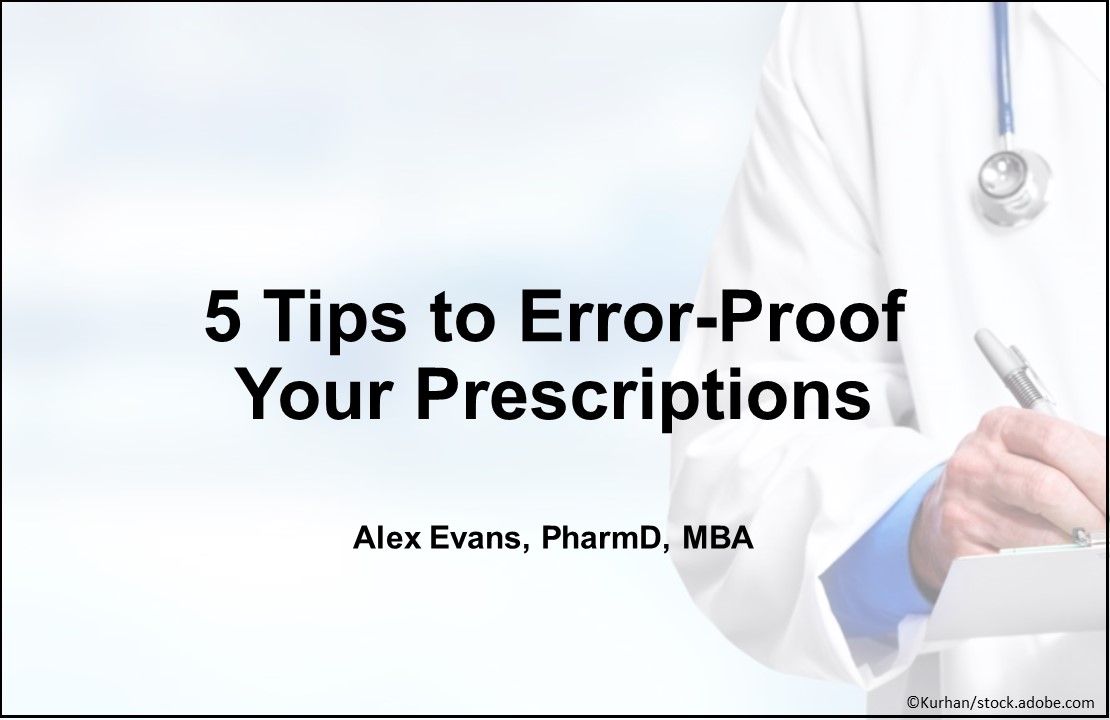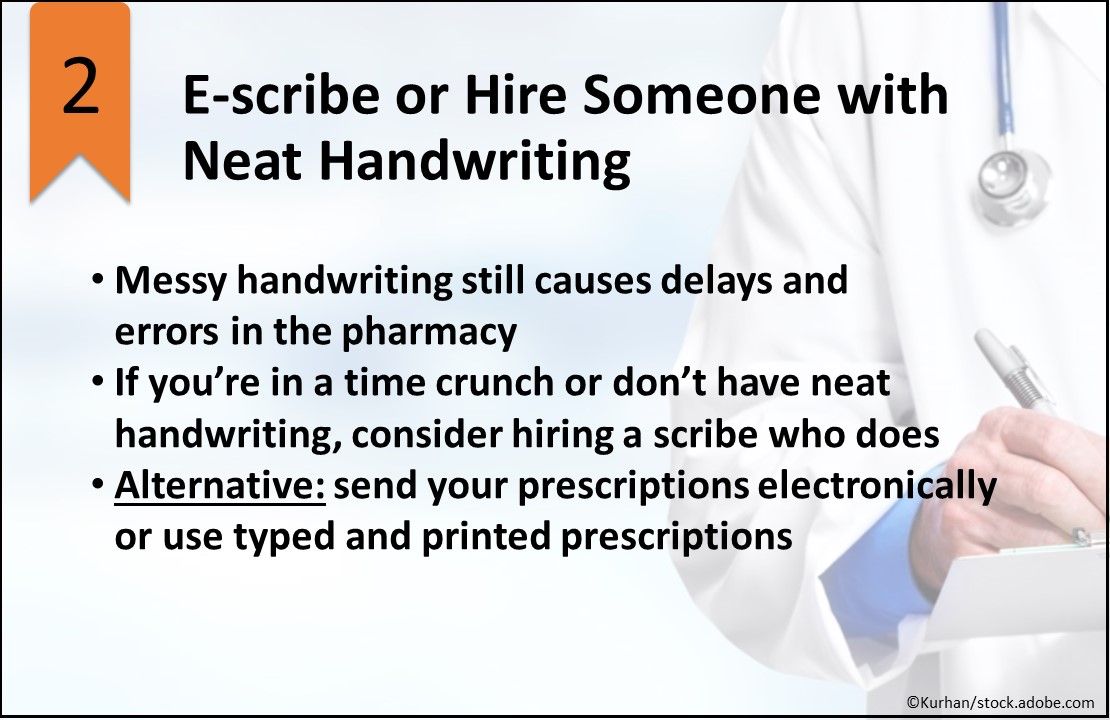5 Tips to Error-Proof Your Prescriptions
Want to avoid a pesky pharmacy call? These 5 tips from the pharmacy trenches can help ensure your prescriptions are error-free.
<br/>

<br/>

<br/>

<br/>

<br/>

<br/>

As I’ve written before on Patient Care® Online, I’ve seen my fair share of prescription gaffes in my career. I’ve also seen our patients inconvenienced and left waiting as we tried to guess what a prescription was for, then had to call the prescriber’s office and wait to hear back before we could fill it. To help prevent that here are 5 tips from the pharmacy “trenches” to ensure your prescriptions don’t end up in our “doctor will call back” pile.
NEXT: Explain unusual dosing and situations
Explain Unusual Dosing and Situations. Sometimes we can clearly tell that a drug is being renally dosed, like when it comes from a nephrology office or we know the patient well enough to know they have chronic kidney disease. If not, we start wondering whether you intended to renally dose the medication or whether it was just a mistake. Pharmacists see mistakes often, so most of us are too cautious to dispense “Cipro Qday,” “Augmentin Qday,” or high and/or unusual doses without checking in with you first. A recent example I saw was a prescription for “Coreg, once daily.” When I called the office, the prescriber immediately realized what had happened and sent me over a prescription for twice-daily dosing.
Why not get ahead of that and just let us know what you’re thinking? It saves you a phone call and prevents delays in therapy. Even better, if you put the creatinine clearance, weight, or other relevant patient factor in the comments, we’ll be glad to double-check the dosing before it reaches the patient.
NEXT: E-scribe or hire someone with neat handwriting
E-scribe or Hire Someone with Neat Handwriting. Electronic prescribing (e-scribing) has largely replaced handwritten prescriptions, but if you do still write prescriptions by hand, please try to write neatly or hire someone who can. Doctors’ handwriting is so legendary that Pharmacy Times has even had contests for pharmacists to guess what it says. While that’s fun for a trade magazine, it’s not fun for patient safety. E-scribing certainly carries its own set of potential issues, but thankfully it has eliminated errors due to poor penmanship. It is also much more efficient for both your office and the pharmacy and more secure than paper prescriptions for controlled substances. In fact, states are beginning to require it.
NEXT: Add the diagnosis or reason for use
Add the Diagnosis or Reason for Use. I rarely see the diagnosis or reason for use on prescriptions, especially before e-scribing. However, it can help us prevent and catch errors-I’m referring also to our own pharmacy errors-as well as help ensure the patient knows why they are taking it. Even though e-scribing typically includes a diagnosis code, seeing the reason helps us a lot (after all, we don’t see or use those codes enough to know that “I10” is hypertension). I once caught a pharmacy error on a refill due to a hydralazine/hydroxyzine mix-up because the doctor took the time to write “for itching.” The law also isn’t very clear on whether pharmacists can embellish the directions and add the reason for use when it’s not there.
In the example of the diagnosis code, if I receive a prescription electronically with “I10,” there are no clear rules (at least in any state I’m aware of) that allow me to add “for high blood pressure” on the end of the directions. Even if there were, if a prescription were sent with the wrong code-I imagine that happens-and I put that reason for use on the label, I will have just compounded the problem. For that reason, the best place is in the directions portion of the prescription.
Also, with a PRN medication, the reason for use helps ensure the patient knows when to take it and can prevent them from mixing up their PRN medications. For example, if a patient has hydroxyzine PRN itching, but also has alprazolam PRN anxiety, they might mistakenly take alprazolam for itching.
NEXT: Standardize the format for handwritten prescriptions
Standardize the Format for Handwritten Prescriptions. This format is by far the easiest to read. I use it every time I take a verbal order from a provider. By dividing it up into these lines, the quantity is clear (and doesn’t get mixed up with how many to take or how many times per day); there is enough room to spell the drug out without squishing the letters together; and we know exactly where to look for the information we need.
As already mentioned, the diagnosis or reason for use is extremely helpful. In the above example, for Kermit’s insomnia problem (frogs are usually nocturnal, you know) the reason for use is included after “PRN.” In this case, as in many, it is critical to write the reason for use because PRN implies the patient is making the decision (within your prescribed limits) of when to use the medication.
NEXT: Check that the quantity makes sense
Check That the Quantity Makes Sense. This one is relatively straightforward, but please make sure the quantity makes sense when compared to the directions. I have seen all of the examples above, or very similar ones, and each resulted in a phone call to the prescriber’s office.
In some cases, pharmacists can still fill a prescription in spite of a quantity mistake. For example, if I were given the mupirocin prescription, I would put “30” in the prescribed quantity field of the pharmacy software system and “22” in the dispensed quantity (ie, I’m filling less than you wrote). In other cases, we can’t fix the error. The Augmentin prescription leaves unclear whether 7 days or 10 days is being prescribed, and the only way for me to know is a phone call. Unfortunately, I’ve seen that mistake with antibiotics quite often.
_________________________________________________
Stay in touch with Patient Care® Online:
→Subscribe to ourNewsletter →Like us on Facebook →Follow us on Twitter →Follow us on LinkedIn→Write or Blog for Patient Care® Online